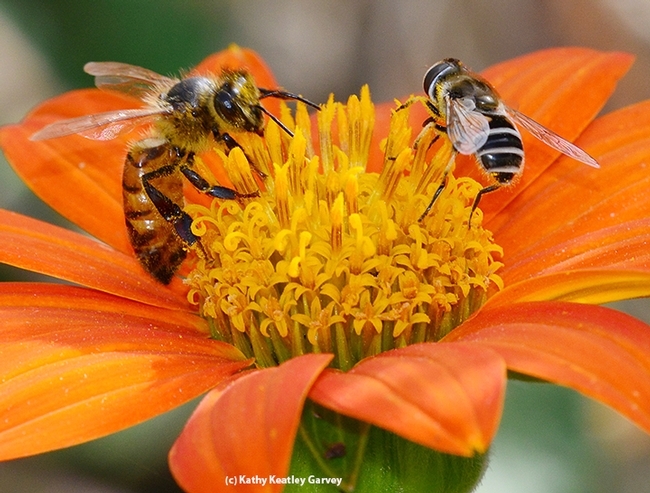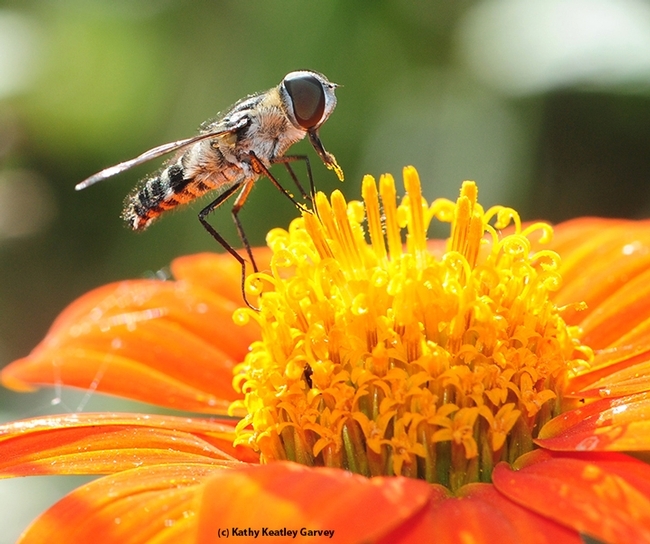Remember that line in Gertrude Stein's 1913 poem, Sacred Emily: "A rose is a rose is a rose"?
Well, to paraphrase Stein: "A bee is a bee is a bee...except when it's not a bee."
In a recent interactive feature in the New York Times, writer Joanna Klein wondered how we can save the bees if we don't recognize them. She asked "Can You Pick the Bees Out of This Insect Lineup?" and posted an image of bees and wanna-be bees.
All entomologists, we're sure, passed. Many others--those who think every floral visitor is a honey bee--probably not.
Bee expert Robbin Thorp, distinguished emeritus professor of entomology at the University of California, Davis, passed it with flying colors--colors that included that gorgeous photo of a metallic green sweat bee. "Photo editors for news articles need to take this test judging by all the images of faux bees that accompany a variety of articles on bees, especially articles designed to educate the public about bees," commented Thorp, who, by the way, is the co-author of Bumble Bees of North America: an Identification Guide (Princeton University Press) and California's Bees and Blooms: a Guide for Gardeners and Naturalists (Heyday). "I suspect that this is what Joe Wilson had in mind when he created the plate of bees and faux bees."
Joseph S. Wilson, as you may recall, co-authored The Bees in Your Backyard: A Guide to North America's Bees (Princeton University Press) with Olivia J. Messenger Carrill. Wilson is also featured in a fantastic TED talk on "Save the Bees! Wait, Was That a Bee?"
Lynn Kimsey, director of the Bohart Museum of Entomology and professor of entomology at UC Davis, gets that a lot--"Is this a bee? Is that a bee?" She recently wrote a piece in the Bohart Museum newsletter about flies masquerading as bees.
Three of the easiest ways to differentiate a fly from a bee:
- A fly has one set of wings. A bee has two sets.
- A fly has short, stubby antennae. A honey bee doesn't.
- A fly has no corbicula or pollen basket. A honey bee (worker bee) does.
A bee is a bee is a bee...except when it's not a bee. Take the New York Times' quiz.
At the end, you'll be asked the number of bee species in the United States. Get ready...
Attached Images:

One's a fly and one's a bee. Can you tell them apart? Honey bee on the left: syrphid fly on the right. They're nectaring on Mexican sunflower, Tithonia. (Photo by Kathy Keatley Garvey)

Not a bee. This is a bee fly, genus Villa. It's nectaring on Mexican sunflower, genus Tithonia. (Photo by Kathy Keatley Garvey)